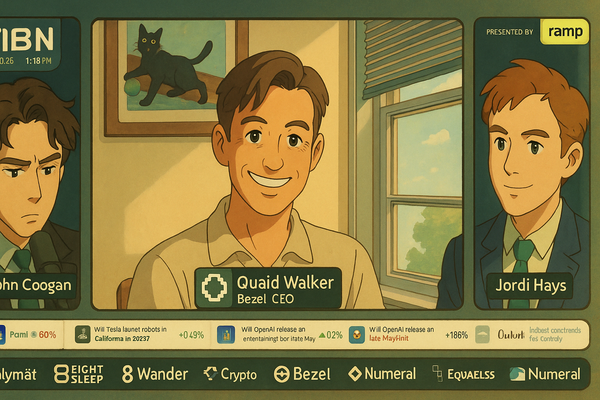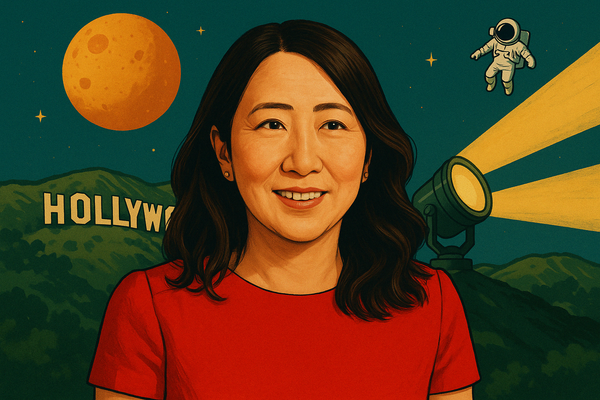Fork in the road
What do you to build?

Please take five minutes to fill out this audience survey. It has two purposes: 1. It helps me prove to my sponsors and prospects how important you are; 2. It gives me insights into the ways I should expand the product. If you leave your email address, I’ll give five respondents a complimentary TRB Pro membership for a year. Take the survey.
In today’s members piece, I dig into an essential question for successful independent content creators: Do you build an institutional brand or stay solo? First some things that have caught my attention and point to how the media ecosystem is evolving. Sign up for TRB Pro for $20 a month.
Recommendations
Is “the media” in the U.S. now more right-leaning? The first White House press conference was meant as a symbolic shift in power with the introduction of seats for “new media,” only for Axios co-founder and longtime Washington journalist Mike Allen to occupy the chair. That said, the power of right-aligned publications like The Free Press and Daily Wire has risen, along with the explosion of alternative media and the manosphere, to the point that Allen’s fellow Axios co-founder Jim VandeHei believes that “the media ecosystem favors the right more than the left.”
Deep Research and the parade of agents. This is the year of AI agents, as the action (and hyperventilation) moves from doing Q&As with chatbots to agents taking actions. They will be clunky initially, of course, but you can be sure they begin with information retrieval vs transactions. OpenAI’s newest agent, Deep Research, is a similar product to Google Gemini Advanced Deep Research. It can create research reports on requested topics. Already, Goldman Sachs CEO David Solomon believes AI can do 95% of an IPO filing that would take up the days and nights of nicely paid research analysts. Much of this points to AI tools moving upstream from cognitive manual labor to more substantive knowledge work. “These systems are already capable of performing work that once required teams of highly-paid experts or specialized consultancies,” Ethan Mollick writes in One Useful Thing.
The AI Super Bowl. It might not rival the (in)famous dot-com Super Bowl, which starred the Pets.com sock puppet, but this year’s Super Bowl will see a parade of AI commercials. OpenAI scrounged up the $7 million per 30-second spot. The Super Bowl is the last area of traditional media that has not seen compression in ad rates. OpenAI’s foray makes sense as it becomes more of an apps company, and the action in AI finally moves from the infrastructure phase to actual usefulness. Imagine. It’s a unique marketing challenge since the technology has arrived with plenty of fear of everything from mass unemployment to ending the world. Much of that has been fanned by OpenAI and others with vested interest in AI being seen as the most consequential human advancement since fire.
Musk’s X turnaround is working. Like his approach or not, Elon Musk delivers. After tanking Twitter’s business, he’s now turned it around to the point where it delivered $1.25 billion in EBITDA last year. Its value, however, is even greater than its cashflow, since Musk has used his ownership to expand his power (and therefore value in his companies) and used X as leverage to build his xAI company that’s been valued at $50 billion. The success will further validate the deep cuts Musk enacted and embolden the fast followers of Corporate America to continue slimming down their operations.
Lessons learned from alternative media. Last week, we held an online forum with Newsweek chief product officer Bharat Krishna and Viafoura CEO Mark Zohar to dig into the ways institutional media can compete with alternative media. One of the biggest ways: Take steps to shift the audience to participation See the replay.
Feedback: The influence game
Adam Ryan, CEO of Workweek, weighed in on Tuesday’s “publishing’s original sin” piece with the perspective that media is still an influence game. Reach still matters, although it is hardly sufficient and only in the service of influence.
“We're in an influence game. Always have been, always will be.
Part of the equation though is how much effort does it take to capture influence as a marketer. Subpar media co, with huge reach, theoretically may influence 2% of your audience and reach 20%. Versus a small publisher who has great influence may influence 3% of your audience reach 4%.
Density vs reach of influence is what this is all about. Comments, likes, etc. allow a lot of people who have large reach to show influence (whether it's true or not).”
Send me your feedback on this and all else by hitting reply or emailing me: bmorrissey@therebooting.com
Being a small fish
The recent Semafor Media podcast had a conversation with Kara Swisher, who has built a tidy business around Kara Swisher. She and her partner Scott Galloway are shopping around their podcast, Pivot, and expecting a big pay day.
She and Galloway are prime examples of independent content creators that face the choice of using their personal brands as leverage to build a bigger enterprise or continue down the lucrative path of staying mostly solo. Galloway has said Pivot alone generates $10 million in annual revenue. Swisher says she makes “many millions of dollars” a year. The costs are very low.
The fork in the road for these types of businesses built around individuals is whether to build out an institutional brand, with added costs and headaches but also bigger potential upside, or stay lean and highly profitable without as much long-term equity value.




